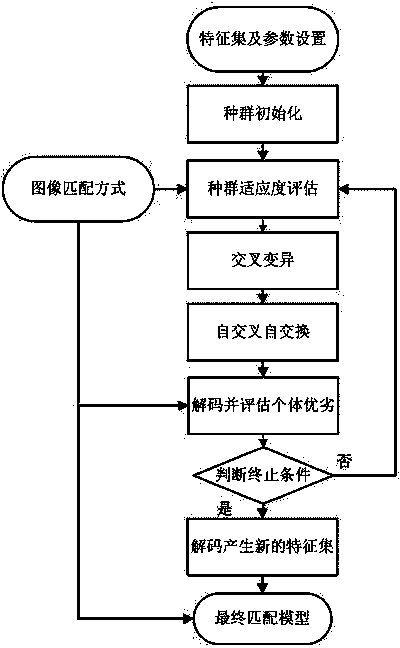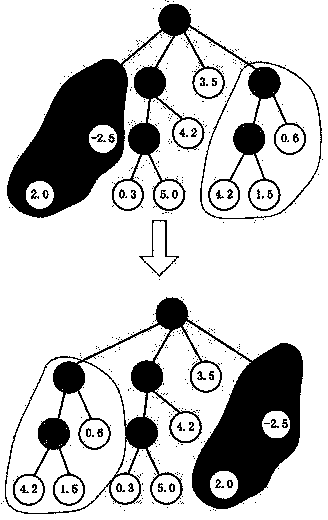Graphic image recognition and matching method based on genetic programming algorithms of novel coding modes
A technology of genetic programming and encoding, applied in the field of graphic image recognition and matching, can solve the problem of not being able to mark label information on image information
- Summary
- Abstract
- Description
- Claims
- Application Information
AI Technical Summary
Benefits of technology
Problems solved by technology
Method used
Image
Examples
Embodiment Construction
[0035] figure 1 It is a flowchart of the present invention. The invention provides a graphic image recognition and matching method based on a genetic programming algorithm of a new coding mode, comprising the following steps:
[0036] (1) Initialize the crossover probability P c , the mutation probability P m , the population size Pop size , change the step-length factor s, and the number of iterations gen; select half of the images in the image library as the training set of the matching model, and the rest as the testing set of the matching model;
[0037] (2) Using the method of "combined moments" of image features, train the images in the training set to generate an image feature library; encode according to the features in the feature library, and initialize the population;
[0038] (3) Calculate the fitness of individuals in the population, retain individuals with high fitness, and perform selection, crossover and mutation operations on the retained individuals;
[00...
PUM
 Login to View More
Login to View More Abstract
Description
Claims
Application Information
 Login to View More
Login to View More - R&D
- Intellectual Property
- Life Sciences
- Materials
- Tech Scout
- Unparalleled Data Quality
- Higher Quality Content
- 60% Fewer Hallucinations
Browse by: Latest US Patents, China's latest patents, Technical Efficacy Thesaurus, Application Domain, Technology Topic, Popular Technical Reports.
© 2025 PatSnap. All rights reserved.Legal|Privacy policy|Modern Slavery Act Transparency Statement|Sitemap|About US| Contact US: help@patsnap.com



